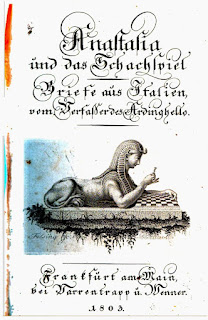The Anastasia Mate is not named for Albert Anastasia (1902-1957) the Italian born member of Murder Incorporated, the kill-for-hire crew that worked for mobster Lucky Luciano and others in the years of Prohibition.
Anastasia was charged in three murders (n 1928, 1932 and 1933), but in each case, witnesses either disappeared or refused to testify. Also, two other high-level mob informants, both under police custody, died before their testimony helped bring Anastasia to trial, in 1941 and 1942.
On the morning of October 25, 1957, Anastasia entered the barber shop of the Park Sheraton Hotel in midtown Manhattan. His driver parked the car in an underground garage and then took a walk outside. As Anastasia relaxed in the barber chair, two men rushed in, shoved the barber aside and fired at Anastasia. A wounded Anastasia lunged at his killers, but he was confused and actually lunged at their reflections in the wall mirror. The gunmen continued filling him full of lead until he was dead on the floor.
The name Anastasia's Mate actually comes from the novel Anastasia und das Schachspiel (Anastasia and the Game of Chess) by Wilhelm Heinse, published in 1903. An example of this mate
was included in the book.
In Anastasia's mate, a Knight and Rook trap the King between the side of the board on one side and a friendly piece on the other. Sometimes the Queen is sacrificed along the a-file or h-file to achieve the position.
Here's an example in which Romanian GM Florin Gheorghiu (born: April 6, 1944) got mated by IM Liu Wenzhe (1940-2011), one of China's top trainers.
The game was played in the 1982 Olympaid which tool place in Lucerne, Switzerland. It was an open and a women's tournament, as well as several other events.
The Soviet team (Karpov, Kasparov, Polugaevsky, Beliavsky, Tal and Yusupov) only drew one match (against the Netherlands) and won the rest and finished 6.5 points ahead of Czechoslovakia (Hort, Smejkal, Ftacnik, Jansa, Plachetka and Ambroz). The United States team (Browne, Seirawan, Alburt, Kavalek, Tarjan and Christiansen) finished third.
The women's tournament was dominated by the Soviet Union (Chiburdanidze, Alexandria, Gaprindashvili, Ioseliani) with Romania (Muresan, Pogorevici, Nuţu-Terescenko and Polihroniade) second and Hungary (Veroci-Petronic, Ivanka, Porubszky-Angyalosine and Csonkics) third.
[Event "Olympiad, Lucerne"]
[Site "Lucerne SUI"]
[Date "1982.11.04"]
[Round "?"]
[White "Florin Gheorghiu (Romania)"]
[Black "Liu Wenzhe (China)"]
[Result "0-1"]
[ECO "A61"]
[Annotator "Stockfish 14.1"]
[PlyCount "48"]
[EventDate "1982.??.??"]
{Modern Benoni: Classical} 1. d4 Nf6 2. c4 c5 3. d5 e6 {In the Modern Benoni
black captures on d5, creating a Q-side P-majority. This and the fianchettoed
B on g7 differentiate black's setup from the other Benoni defenses. Frank
Marshall invented the modern version in 1927, but it wasn't until the 1950s
that Soviet players, mainly Tal, established it as a playable defense. Then
the defense suffered a serious crisis in the 1980s and 1990s, when black began
running into difficulties. It's reputation was restored in the 2000s thanks to
Vladimir Kramnik.} 4. Nc3 exd5 5. cxd5 d6 6. Nf3 g6 7. Nd2 Nbd7 8. e4 Bg7 9.
Be2 O-O 10. O-O Re8 11. a4 Ne5 12. Re1 a6 13. f4 Neg4 (13... Ned7 {is playable,
but rather passive.} 14. Bf3 Rb8 15. Nc4 Nb6 16. Nxb6 Qxb6 17. e5 Nd7 18. e6
Nf8 19. exf7+ Kxf7 20. Rxe8 Kxe8 21. a5 Qc7 22. Ne4 Kf7 23. Bd2 Bxb2 24. Rb1
Bd4+ 25. Kh1 Bf5 26. g4 Bxe4 27. Bxe4 b6 28. Qf3 {White is better, but a
Shirov,A (2719)-Gashimov,V (2758)/Linares 2009 agreed to a draw here.}) 14. Bf3
h5 {This excellent move equalizes. The oft played 14...Nxe4 is risky.} (14...
Nxe4 15. Ncxe4 Bd4+ 16. Kh1 Qh4 17. h3 {Black should now play 17...Re7.
Instead he plays a move that quickly lands him in trouble.} Bf5 18. Re2 Ne3 19.
Qb3 Bxh3 20. gxh3 Qxh3+ 21. Rh2 {1-0 Sumets,A (2583)-Ahlers,B (2124)/
Amsterdam 2013. Black's resignation was a bit premature, but white is clearly
better.}) 15. Nc4 Nxe4 16. Rxe4 (16. Nxe4 {is inferior.} Bd4+ 17. Ne3 Bf5 18.
h3 Bxe4 19. hxg4 Qh4 {with a very dangerous attack.}) 16... Bd4+ 17. Rxd4 cxd4
18. Ne4 Qh4 19. Ncxd6 Qxh2+ 20. Kf1 Bf5 {The position is rife with
complications!} 21. Nxf5 {This is a mistake after which black gets a strong
attack. Chances are equal after 21.Qxd4} (21. Qxd4 Bxe4 22. Nxe4 f5 23. Qb6 {
Attacking g6.} (23. Nd6 Qh1+ 24. Qg1 Qxg1+ 25. Kxg1 Re1# {This is what happens
in a few moves.}) 23... Qh1+ (23... Kg7 {loses in any number of ways.} 24. Bxg4
Rxe4 25. Qxb7+ Kh6 26. Qxa8 Qh1+ 27. Kf2 Qe1+ 28. Kf3 hxg4#) 24. Ke2 fxe4 25.
Qxg6+ Kf8 26. Qf5+ Kg8 27. Qg6+ {draws.}) 21... gxf5 (21... Rxe4 {This move
secures the advantage.} 22. Nh6+ Nxh6 23. Bxe4 Re8 24. Qxd4 Qh1+ 25. Qg1 Qxg1+
26. Kxg1 Rxe4 {Black stands well.}) 22. Nf2 {Here the position is equal.
Black's next move is actually mistake that should have resulted in white
securing a significant advantage, but one suspects Wenzhe was setting trap
into which Gheorghiu immediately falls.} d3 (22... Re3 {was best, correct
actually.} 23. Bd2 (23. Ra3 {is also playable.} Nxf2 24. Kxf2 Qh4+ 25. g3 Qh2+
26. Kf1 Rxf3+ 27. Qxf3 Re8 28. Rd3 Qh3+ 29. Kf2 {Black must take the draw with}
Qh2+) 23... Qxf4 24. Bxg4 hxg4 25. Kg1 Kg7 26. Bxe3 dxe3 27. Nd3 {with an
unclear position in which both sides have chances.}) 23. Qxd3 h4 {This is a
gross blunder that loses immediately!} (23... Qg3 {leads to unclear
complications.} 24. Bxg4 Qxd3+ 25. Nxd3 fxg4 {Stockfish gives white a nearly 3
Pawn advantage and in Shootouts scored 5 wins in 5 games.}) 24. Qxf5 {
Gheorghiu takes the bait.} (24. Bd2 {covering e1 would win rather easily after}
Qg3 25. Bxg4 Qxd3+ 26. Nxd3 fxg4) 24... Qg1+ {Anastasia's mate.} (24... Qg1+
25. Kxg1 Re1#) 0-1



No comments:
Post a Comment